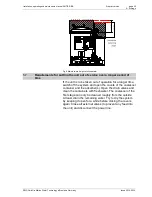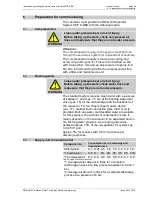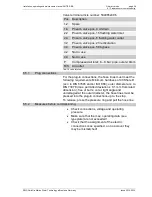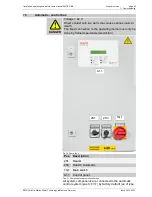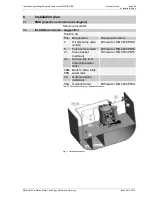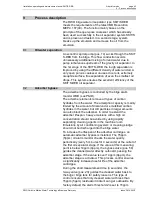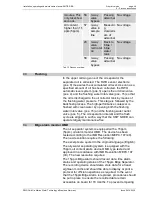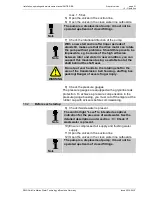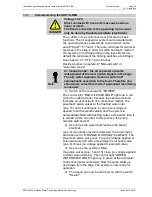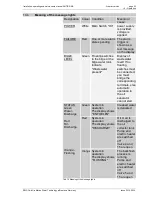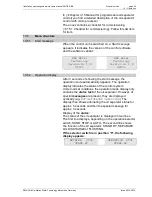
Installation, operating and maintenance manual SKIT/S-DEB
3rd print version
page 48
9 – Process description
RWO GmbH
●
Marine Water Technology
●
Bremen
●
Germany
Issue 2014-04-10
minutes. This
only takes few
seconds.
58
3-way
valve
bypass
Passing
adsorber
No voltage
Oil content
higher than 15
ppm (5ppm).
57
3-way
valve in
sample
line
Measurin
g
downstre
am of
adsorber
No voltage
23
3-way
valve
recirculati
on
Back to
bilge /
bilge
water
tank
No voltage
58
3-way
valve
bypass
Passing
adsorber
No voltage
Tab. 13 Process overview
9.3
Flushing
In the upper calming zone of the oil separator the
separated oil is collected. The RWO sensor electrode
(pos. 9) measures the accumulated oil level. As soon as a
specified amount of oil has been collected, the RWO
automatic level system (pos. 3) opens the oil drain valve
(pos. 4) and the flushing water inlet valve (pos. 15) so that
the oil is discharged to the oil collector tank by means of
the flushing water pressure. This stage is followed by the
backflush process. The high-performance coalescer is
flushed with clean water by opening both the flushing
water inlet valve (pos. 15) and the flushing water outlet
valve (pos. 5). The oil separation interval and the flush
cycle are aligned in such a way that the SKIT S-DEB can
operate largely maintenance-free.
9.4
Bilge alarm monitor OMD
The oil separator system is equipped with a 15ppm
(5ppm) oil alarm monitor OMD. The device has been
tested according to the IMO Resolution MEPC.107 (49).
The new resolution requires the following:
The excerpts are quoted in the original language (English).
The oily water separating system is equipped with the
15ppm oil content alarm device OMD, type tested and
approved in accordance with IMO Resolution MEPC.107
(49). The new resolution requires:
The 15ppm Bilge Alarm should record date, time alarm
status and operating status of the 15ppm Bilge Separator.
The recording device should also store data for at least
eighteen months and should be able to display or print a
protocol for official inspections as required. In the event
that the 15ppm Bilge Alarm is replaced, procedures should
be put in place to ensure the recorded data remain
accessible on board for 18 months. To prevent tempering


